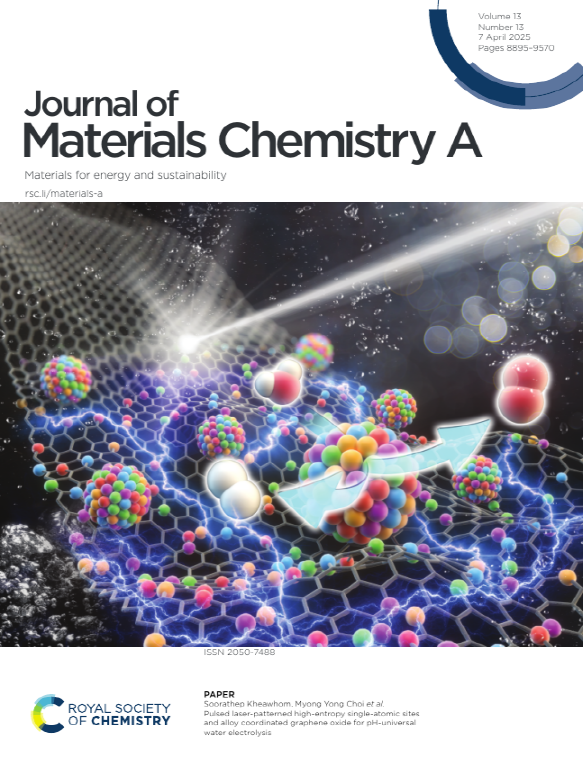Journals
Laser Photochemistry Laboratory
Journals
Laser Photochemistry Laboratory

Abstract
Electrocatalytic overall water splitting (OWS) is a promising technology for sustainable hydrogen (H 2 ) production. However, its practical application is hindered by the sluggish kinetics of the anodic oxygen evolution reaction (OER). To address this challenge, high-entropy oxides have emerged as promising OER electrocatalysts owing to their tunable composition and synergistic effects among constituent elements. In this study, we present the fabrication of a spinel-structured high-entropy Cr(NiFeCoV) 2 O 4 (HE-Cr(NiFeCoV) 2 O 4 ) catalyst using a rapid continuous-wave CO 2 laser thermal-shock method. The resulting HE-Cr(NiFeCoV) 2 O 4 catalyst demonstrated excellent electrochemical OER performance in 1 M KOH electrolyte, achieving a low overpotential of 284 mV at 10 mAcm −2 and maintaining long-term stability over 100 h at 50 mAcm −2 . Furthermore, an OWS electrolyzer assembled with HE-Cr(NiFeCoV) 2 O 4 as the anode and Pt/C as the cathode operated at a low cell voltage of 1.57 V at 10 mAcm −2 for efficient H 2 production. In situ Raman spectroscopy confirmed the surface formation of active FeOOH species during OER, while density functional theory calculations revealed how the multi-metal synergy within a single lattice modulated the electronic structure, thereby enhancing the OER activity of Cr(NiFeCoV) 2 O 4 . This study establishes a cost-effective and energy-efficient pathway for developing advanced multicomponent electrocatalysts for clean energy applications.
Keywords: Continuous-wave CO 2 laser; High-entropy oxides; Electrocatalysts; Oxygen evolution reaction; Efficient H 2 production; In situ Raman and DFT insights